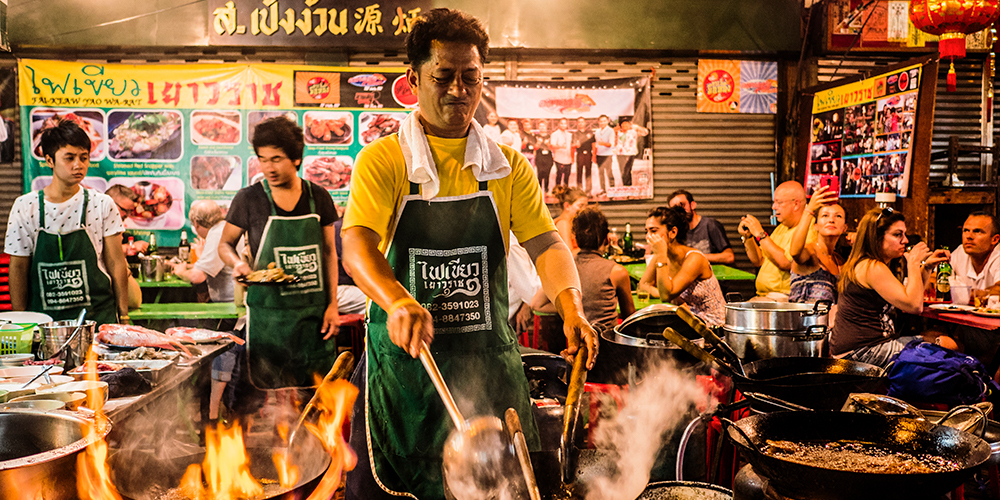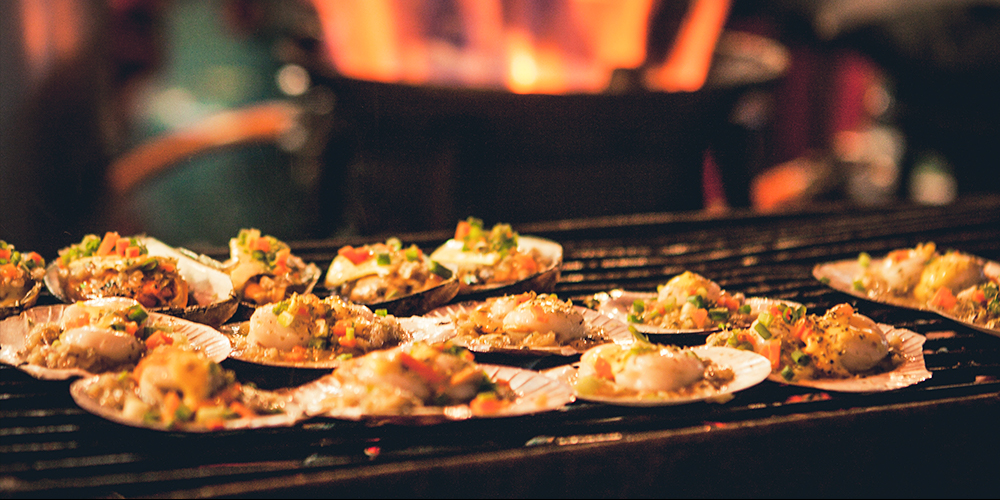

An iconic and unmissable destination for visitors to Bangkok, Yaowarat is also important to many Thai-Chinese families, as historically it’s where a large number of Chinese immigrants settled to start a new life. Let’s have a deeper look at the rich heritage of Bangkok’s Chinatown and get to know this famous area a little better.

Yaowarat Road was part of a project built during the reign of King Rama V (1853-1910), who saw the area we now think of as Bangkok’s Old Town as very valuable for economic growth. Some people even compare the street’s weaving curves to the shape of a dragon, which is a symbol of wealth and power. As famine took hold in China, Thailand became a popular destination for Chinese immigrants to resettle and start a new life. As more and more new families settled along this street, Chinese and Thai cultures started to intertwine and eventually became a key driving force for the country’s financial stability. Nowadays, many Chinese businesses still operate in Yaowarat and the area remains popular among locals and tourists alike as it’s always buzzing with energy and memories from the good old days.

Find Yaowarat in Bangkok’s Old Town. This 1.5-kilometre street sits right next to Charoenkrung Road, another historically rich area enjoying a resurgence. You’ll know you’re in Yaowarat when you spot its famous landmark, The Odeon Roundabout. From here, you can easily spend an afternoon getting lost among its many old-school shophouses, gold stores and street food stalls.

Yaowarat is best to experienced on foot and at night, when it turns into a foodie paradise. Don’t miss the fresh seafood stalls along the street where you can find delicacies from the deep cooked in both Thai and Chinese styles, and save some room for some of the many traditional Chinese desserts, including shaved ice with herbs and condiments. Feeling adventurous? Wander down the alleyways that sprout off the main street to find yet more roadside Thai treats. For a break from all the food, stop by some of Bangkok’s most renowned temples, like Wat Traimitr and Wat Mangkon Kamalawat, where throngs of people come to pray for wealth and good health. If you can stand the crowds, come during Lunar New Year in February or the Vegetarian Festival at the end of September for a real glimpse of the local culture as passed down from generation to generation.






Take a scenic cruise from BTS Saphan Taksin pier to Surawong pier on the Chao Phraya River boat. Or hop on the MRT: Hua Lamphong station is a 10-minute walk from the centre of Chinatown and towards the end of 2019, a new and even nearer station, Wat Mangkon, will be open. Taxis and tuk tuks are also comfortable options; just be aware that traffic in the area can be especially hectic at peak hours.
